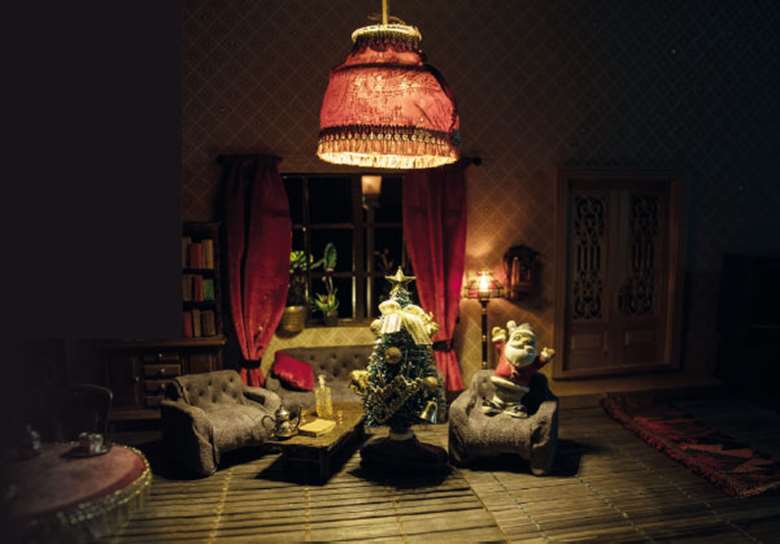Play for study: A Doll's House
Henrik Ibsen
Monday, February 1, 2021
Each issue of D&T we bring you a teachers’ guide to a play for study with your students, written by a fellow teacher. This issue, in extracts from her new edition commentary, and a 2020 webinar, Dr Sophie Duncan introduces some key concepts to consider in the study of an Ibsen classic.

ADOBE/ZEF ART
Ibsen began plotting A Doll's House on 19 October 1878, in a café in Rome. Writing to the critic Edmund Gosse in July 1879, he described the play as ‘really a domestic family drama, dealing with contemporary problems in regard to marriage’.
Inspired by a true story
Real-life events partly inspired A Doll's House. Aged 19, the Norwegian-Danish novelist Laura Petersen sent Ibsen her sequel to Brand (Brand's Daughters), and they became friends. Ibsen nicknamed the attractive Petersen ‘skylark’ (as Torvald does Nora). In 1876, Laura's husband Victor Kieler contracted tuberculosis and doctors advised a trip to a warmer climate. Laura funded their travels via a loan she could not repay; when Laura wrote another novel and begged Ibsen for help publishing it, Ibsen refused. Despairing, Laura forged a cheque to clear the debt. When the bank discovered this, Victor threatened to divorce Laura as a criminal, temporarily incarcerated her in a mental asylum, and denied her access to their children for two years: all while Ibsen was writing A Doll's House. Petersen's association with Nora appalled her, not least because (unlike Nora) she never left her children, but was removed from them by force.
Theatrical styles
A Doll's House is recognised for its Naturalism, but is also rooted in melodrama, the nineteenth century's dominant theatrical form. Melodramas were characterised by sensational plots with stock characters embodying either virtue or vice; a strong musical element; spectacular visuals; and climactic endings that resolved the convoluted plots. Today, ‘melodramatic’ is a pejorative description, but nineteenth-century melodramas frequently articulated working-class oppression or made ambitious, innovative use of stage technology. ‘Melodramatic’ acting was highly gestural and legible, externalising all emotion. Actors played to huge auditoria of up to three thousand people, without any amplification.
A Doll's House clearly inherits from popular melodrama and the French ‘well-made plays’ which Ibsen had programmed and directed at Bergen's Norwegian Theatre. The play relies on melodramatic tropes: secrecy and revelation; a villainous blackmailer; and a fatal letter.
Key themes
All Ibsen's plays have strong elements of social critique and there is a sense of Nora moving from childhood to adulthood; from a status as a toy to wanting to be a rounded human being – but at a terrible cost. Although Ibsen holds out for the possibility of a positive theme, in that a good marriage could exist, it doesn't happen in this play. It is a tragedy, but a tragedy that defies the expectations of the characters and also of the audience.
You can do really interesting work on Ibsen's language, and the way he choreographs the stage. If you follow the stage directions and plot where the characters move, Nora takes up a lot more space than the other characters, which is really unusual for the time.
Whether you're considering a Tanika Gupta adaptation and setting the play in colonial Anglo-India or you're transplanting the play to the middle east as [1992 film] Sara does, the most important thing is to keep a sense of history. Because Ibsen is so much a ‘social problem’ playwright, the play at its richest is always saying something about society.
The communicative nature of theatre means that the play is always meant to be being performed to people who exist in their own moment. It's that resonance which is so important in this play. The issues of marriage and motherhood and gender roles are always relevant, but recently we've begun to think more about how the play depicts masculinity and to see that the patriarchal structures in the play are actually harming Torvald. Nora has a completely unrealistic idea of what he should be like. He can't treat his wife as an equal – he doesn't know how – but his aim is not to be a terrible controlling husband, and that is also important. The issues of how to balance the competing claims of family life and self are also very resonant.
Written in the middle of the Victorian era, the play has a far greater central role for a woman than most new writing now. When I compare Ibsen to male playwrights writing today, I can't think of any major male playwright who is as consistently interested as Ibsen in writing great roles for women. That's one area of feminism within theatre, regarding the way women are depicted as characters in drama, in which Ibsen is astonishing, and almost unique. Very few writers for the stage today consistently give women leading and dominant roles with a great deal of psychological interiority. Caryl Churchill does, and Laura Wade has done, but they are very unusual.
Sophie Duncan's new Student Edition of A Doll's House is published by Methuen Drama: www.bloomsbury.com/uk/a-dolls-house-9781350116788/A Q&A with Sophie Duncan can be found at www.bloomsbury.com/uk/superpage/stay-connected-to-the-drama
Methuen Drama is offering D&T readers a 20% discount until 31 March 2021, using the code: DT2021

